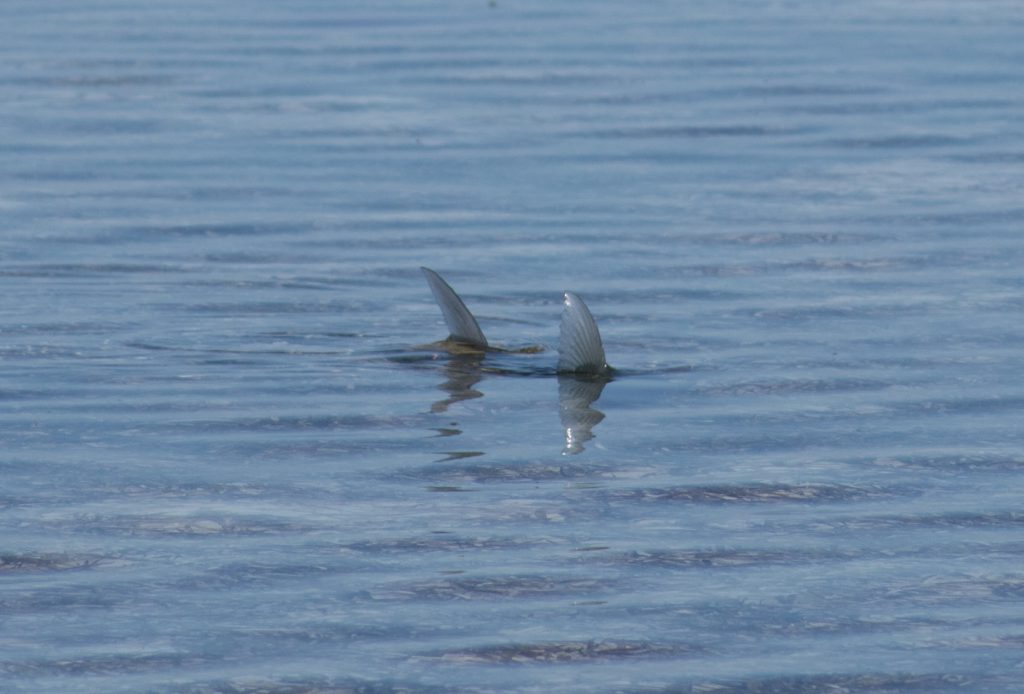As I crept along a mangrove-fringed shoreline in shin-deep water, I could barely make out the tips of a bonefish tail and dorsal fin in the pre-dawn light. The fish slowly searched the shallows for food, occasionally tipping on a found morsel, its entire tail exposed. I cast the fly to land on the exposed sand, and slowly crept the fly into the water. The bonefish turned and slurped in the barely-wet fly. The fight was on.
These are the scenarios we think about when we think about fishing for bonefish – shallow flats, mangroves, and tailing fish moving in and out with the tides. And the flats habitats are priority one for conservation actions like habitat protections, but making sure bonefish populations are healthy enough to support strong fisheries requires more than just the flats. We must also protect the locations where they spawn, and the routes they use to migrate to spawning sites.
Working with BTT science partners, fishing guides, and The Bahamas National Trust, information from bonefish research was used to establish six new national parks in 2016 that protect bonefish habitats. Three of these parks protect bonefish spawning sites that were identified by this research.
Click here to read the full article in the new issue of Fly Fish America magazine.
Photo: Dr. Aaron Adams




